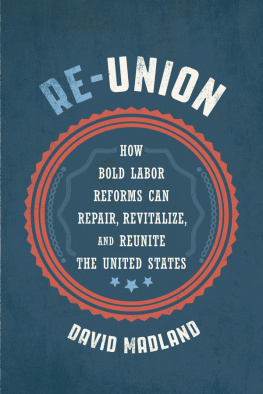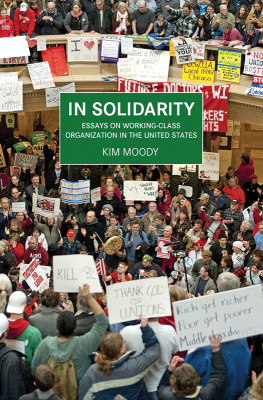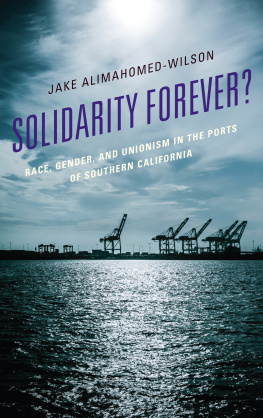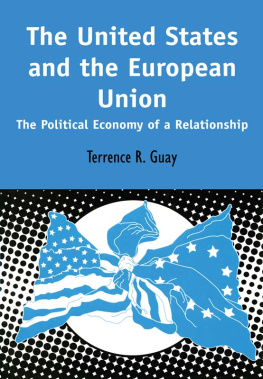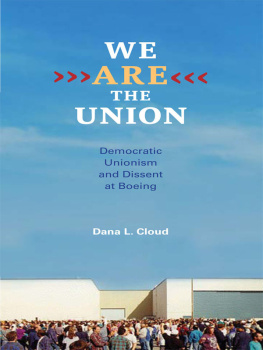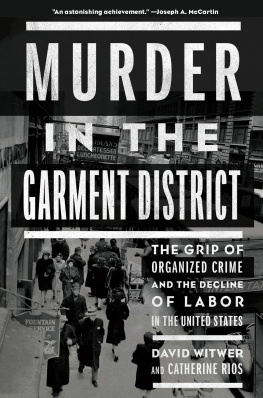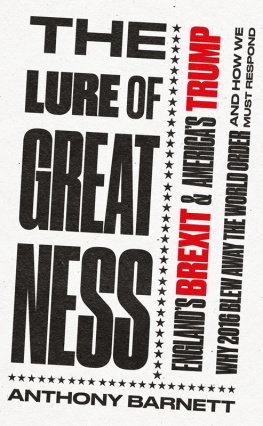Acknowledgments
I am thankful for the help and support of the many people who made this book possible.
I am particularly grateful to those who took to time to read chapters or drafts and provide valuable feedback, including Kate Andrias, Matt Dimick, Keith Ewing, Jim Stanford, Cathy Braker, Marc Jarsulic, Andy Green, Greg Kauffman, Alex Rowell, Danyelle Solomon, Sam Berger, Sara Slinn, Phillip James, Shae McCrystal, Karla Walter, Fred Wilson, Kevin Reilly, Becky Wasserman, Steve Kreisberg, and three anonymous reviewers.
I appreciate the assistance Malkie Wall provided on so many facets of the book. Adam Stromme, Divya Vijay, and Nathan Smith provided additional research help.
At Cornell University Press, I am grateful for the support that Fran Benson and many others demonstrated throughout this project.
Researching this book, I benefited from the ability to learn from and bounce ideas off numerous people, including Christy Hoffman, Kelly Ross, Damon Silvers, David Rolf, Ben Sachs, Sharon Block, Larry Cohen, Cam Dykstra, Brad James, Gavin McGarrigle, Angelo DiCaro, Tonia Novitz, Amanda Brown, Jennifer Abruzzo, Mia Dell, Arun Ivatury, Peter Colavito, Ian Campbell, Glenn Adler, Joe Isaac, Michelle Bissett, Iain Ross, Brian Lawrence, Matt Cowgill, Mark Bray, John Howe, Amanda Mansini, Tim Lyons, Tim Lee, Trevor Clarke, Margaret McKenzie, Scott Barklamb, Cath Bowtell, Andrew Stewart, Shae McCrystal, Rae Cooper, Tony Slevin, Ray Markey, Frances Flanagan, Damian Oliver, Kristina Keneally, Wayne Swan, Gerard Hayes, Tony Shelton, Michael Kaine, Adam Serle, Geoffrey Giudice, Elsa Underhill, Julius Rowe, Nick Wilson, Dario Mujkic, Imogen Beynon, Lowell Peterson, Judy Scott, Catherine Fisk, Paul Booth, Zack Fields, Joel Rogers, Richard Freeman, Amy Sugimori, Brishen Rogers, Carmen Rojas, David Socolow, Wilma Liebman, Nicole Berner, Cheryl Feldman, Julie Su, Geoff Betts, Ann Burdick, Jeffrey Bennett, Shelia Blackburn, Uta Dirksen, Earl Mathurin, Achim Wachendorfer, Tony Cheng, Roger Pollak, Lynn Rhinehart, Craig Becker, Bill Samuel, Carolin Vollmann, Matthew Finkin, Tom Kochan, Harold Meyerson, Andy Stern, Richard Heyman, Cynthia Estlund, Eileen Applebaum, Jennifer Gordon, Stephen Lerner, Jeffrey Vogt, Janice Fine, Ai-Jen Poo, Katherine Stone, Lyle Scruggs, Amy Rosenthal, Tim Lyons, David Socolow, and Kathleen Thelen.
Research for this book was also assisted by my receipt of an Australia Endeavour Executive Fellowship and a Friedrich-Ebert-Stiftungs EU Study Visit.
At the Center for American Progress, I have been fortunate to work in a stimulating environment conducive to exploring the future of the labor movement. I appreciate the support I received for this effort from Neera Tanden and numerous colleagues, including Ben Olinsky, Andres Vinelli, Olugbenga Ajilore, Christian Weller, Jacob Leibenluft, Marc Jarsulic, and Livia Lam as well as others who read drafts or helped in other ways, many of whom are named elsewhere.
I want to acknowledge the important role that Thomas Geoghegans book Only One Thing Can Save Us had in sparking this book.
Finally, I am thankful for the support my friends and family provided while I researched and wrote this book.
Introduction
The United States faces some of the most significant challenges in its history. For decades, the economy has failed to deliver for most people, the political system has been hijacked by corporations and the wealthy, political polarization has risen to extreme levels, trust between people fallen sharply, and racism and sexism have been stubbornly persistent. More recently, the COVID-19 pandemic hit the US so hard because too many leaders and citizens failed to take basic steps to protect the public health. Alarm bells are ringing, warning that things need to change or else the countrys already grave problems will get much worse.
Many problems in the United States stem from the fact that working people have too little economic and political power. Most Americans have not been able to get a fair share of the gains they help create or been able to ensure that their elected representatives respond to their economic concerns. This powerlessness continues to compound as rapid technological change makes it easier for companies to contract out, control workers, and generally make work worse, and lobbyist-influenced legislation increasingly provides the wealthy with additional advantages.
The central argument of this book is that stronger unions operating under a new type of labor system could help address the countrys underlying economic and political challenges. A new labor system would raise wages, reduce extreme economic inequality, strengthen the middle class, and increase the responsiveness of politicians to regular citizens. It would even help address the decline of trust and the huge racial and gender divides in society.
Unions bring together people who on their own have relatively little influence with employers or politicians. But when people join together in unions they have greater ability to negotiate for higher wages, better benefits, and improved working conditions and are significantly more likely to vote and participate in politics. Unions also give workers a voice in the behind-the-scenes battles where policy details are hashed out. In addition, unions bring together people across race, ethnicity, religion, gender, and even class, in ways that few other organizations do.
Yet simply trying to resurrect the labor system the United States had in the 1950s will not do. The world has changed since then, exposing the labor systems long-standing flaws.
In the first few decades after World War II, union membership was highcovering around one-third of the workforcedue to gains unions had made through the favorable policies of the National Labor Relations Act of 1935 and the pro-union policies enacted during World War II. A number of elected officials in both the Democratic and Republican parties supported, or at least accepted, unions as a part of the economy. These factors helped the US labor system deliver shared prosperitythough it left out too many workers, particularly women and African Americans.
But almost every factor that enabled the old system to work fairly well for the workers it chose to cover has changed. The law has become increasingly hostile to unions. It makes it very difficult for private-sector workers to unionizejust 6 percent of private-sector workers are union members today, virtually the smallest share of the private-sector workforce since the country industrialized in the 1800sand public-sector unions have come under attack in recent years and are starting to lose density as well. Foreign competitors have chipped away at US economic dominance. Common bonds among all Americans have become harder to find, and social capital has withered away as economic inequality has increased. Cultural and economic norms have shifted to an especially cutthroat version of capitalism. Capital has become more mobile, enabling employers to more easily move jobs around the country and the world. The service sector increasingly dominates the economy as the more heavily unionized industrial sectors make up a smaller and smaller share of jobs. Modern firms are no longer vertically integrated: they now focus on their core competencies and contract out work as much work as possible. Even though large firms are structured differently, they have become more dominant in their fields and face less competition to increase wages. Leaders of the Republican Party have become more hostile to unions, while the Democratic Party has not always had labors back.

